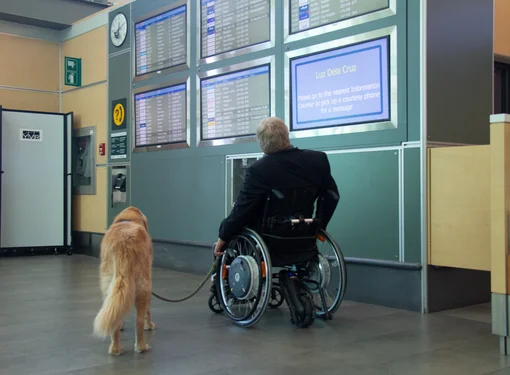Coping with vision loss in a sighted world
It’s hard to watch your mother struggle. It’s even hard to write about. Yet, that’s what I’m doing because my mother, Margaret Saloustros, and I want to raise awareness about vision loss—the challenges it brings and the help that’s available.
My Mom’s always had poor eyesight, but it never used to impede her in any way. She just wore prescription glasses, and got on with her life. She loved her job as a library clerk, enjoyed embroidery, and made beautiful pottery. When we were kids, she did what many moms do: drove us to school, made us delicious meals, and read us bedtime stories. I still don’t know how she did it all!!
Diabetic Retinopathy
When I was 15, my mother was diagnosed with type two diabetes. Her blood sugar level was very high then, and it was difficult for her to control. Over the years she has had to try various medications, and radically change her diet, giving up alcohol, meat, and limiting carbohydrates. Though her sugar level is stable now, it was during these years of trial and error that she developed diabetic retinopathy.
This condition “affects blood vessels in the light-sensitive tissue called the retina that lines the back of the eye. It is the most common cause of vision loss among people with diabetes and the leading cause of vision impairment and blindness among working-age adults."
Diabetic retinopathy initially has no symptoms. That’s why anyone who has type one, type two, or gestational diabetes needs to go for at least a yearly dilated eye exam. When my Mom first went to the ophthalmologist, it was because she started seeing floaters. These are dark spots or vein-like lines that appear and can obscure your vision. For some people, floaters are merely an annoyance that goes away. In my Mom’s case, these floaters were the result of hemorrhages, which meant that the retinopathy had already been damaging her eyes for some time.
Vision loss and treatment
My Mom’s received laser treatment for these floaters for years. She’s had hundreds, maybe thousands of laser ‘zaps’, as she calls them, in her eyes. They stop the hemorrhaging, but bleeds reoccur, and she’s never sure how her vision is going to be affected each time. My Mom gave up driving soon after these floaters sprang up. She’s felt a loss of independence since. However, she’s not alone. I’ve driven her to many of these laser treatments, and the waiting room is always full with people. Not everyone has diabetic retinopathy, but everyone is there due to some measure of vision loss.
Cataracts and glaucoma are also more prevalent among people with diabetic retinopathy. “Adults with diabetes are 2-5 times more likely than those without diabetes to develop cataracts . . . [and] in adults, diabetes nearly doubles the risk of glaucoma.”2 My Mom had cataract surgery about a decade ago, but fortunately has not developed glaucoma. In the last few months, though, my Mom’s vision took a serious turn for the worse. She had a major hemorrhage in her right eye that left her unable to see anything but the colours grey and blue.
Lack of accessibility
The world’s become a much less accessible place for my Mom since then. At home, she’ll try to pour herself a glass of water, but half of it will end up on the counter. If she wants to go for a walk in the neighbourhood, that’s challenging as well. She can’t distinguish the grey curb from the grey sidewalk and has difficulty navigating stairs, so now she always walks with a family member or friend. At the grocery store, food labels are too small to read, and those bins where you need to fill up a bag and write down the tiny code on a tag are impossible for her to manage. It’s difficult for her to read instructions on medication from the pharmacy, as well.
While she’s been retired for some time, my Mom’s life as an artist has suffered too. She continues to do pottery, but glazing, and painting designs on her work has become very challenging. She’d also like to complete some of her unfinished embroidery, but that kind of handiwork is impossible now that she has no sight in one eye and still has compromised vision in the other.
Help navigating a sighted society
At the end of August, my Mom will go for an operation to restore the sight in her eye. She’s been told that she must have a surgical procedure first before they can do any more laser treatment. We have high hopes that the operation will be a success and she’ll be able to see out of her eye again. My Mom’s family and friends have been a great support system for her during this time. Yet, there are many people with vision impairments that do not have this kind of network around them, and that’s why the Canadian National Institute for the Blind (CNIB) offers assistance.
CNIB has also recently begun operating Vision Loss Rehabilitation Canada. Anyone experiencing vision loss, can get a referral from an ophthalmologist, optometrist, or health care provider to gain access to the services provided. These include: low vision services, essential skills for daily living, and travel and mobility instruction.




